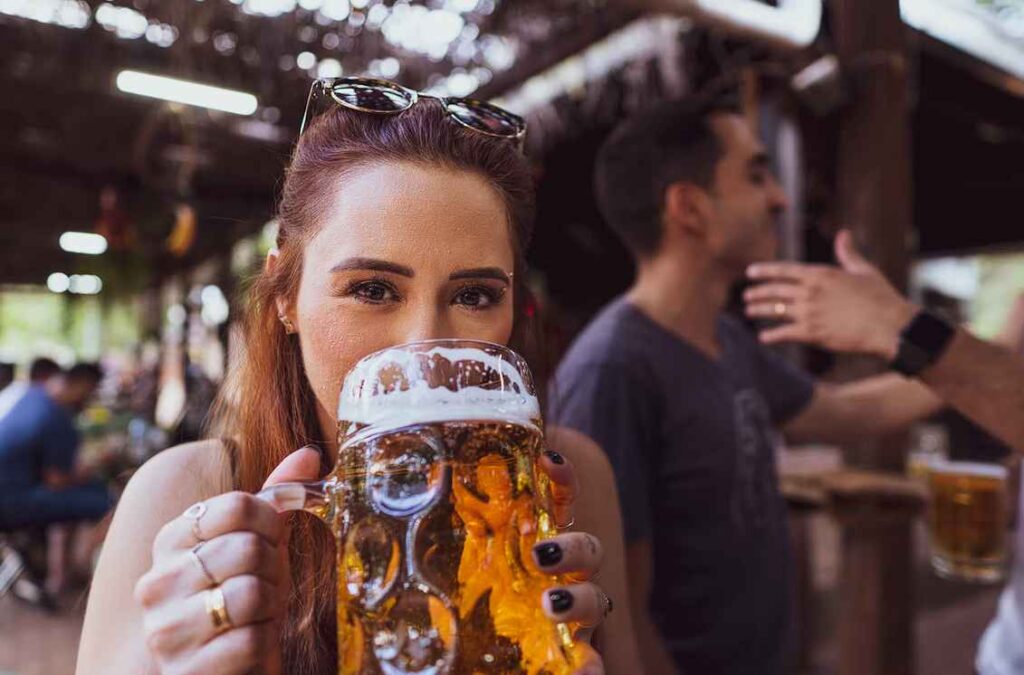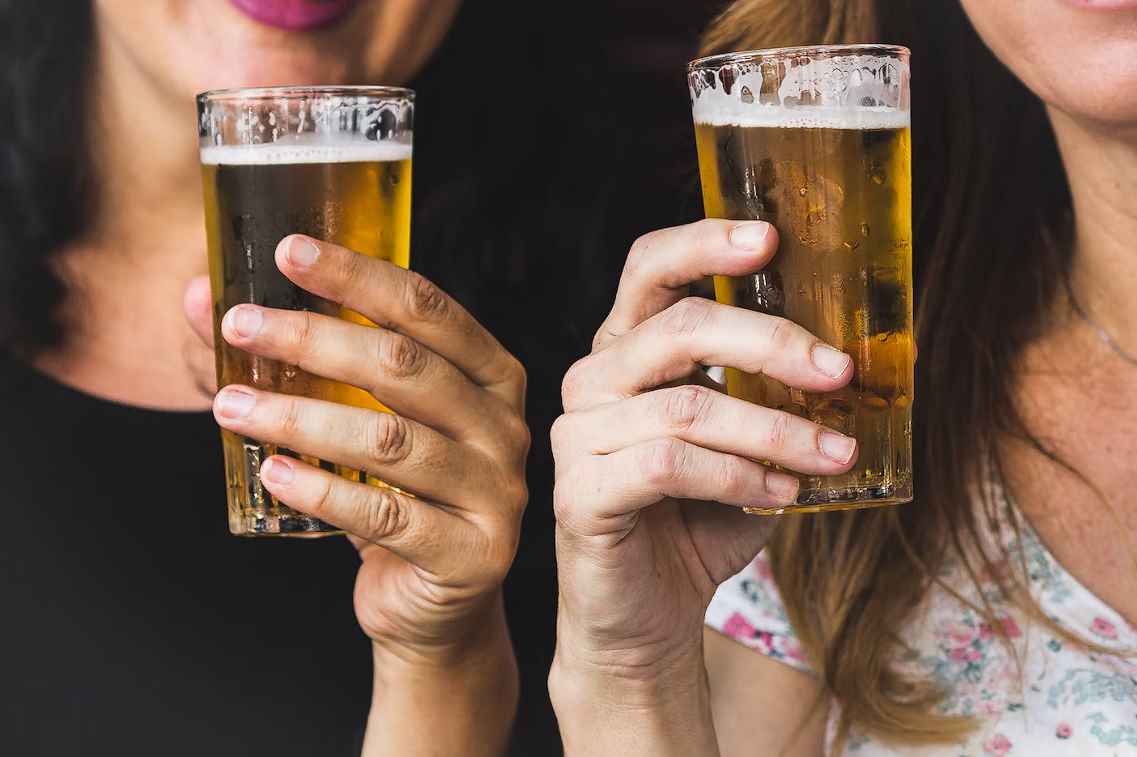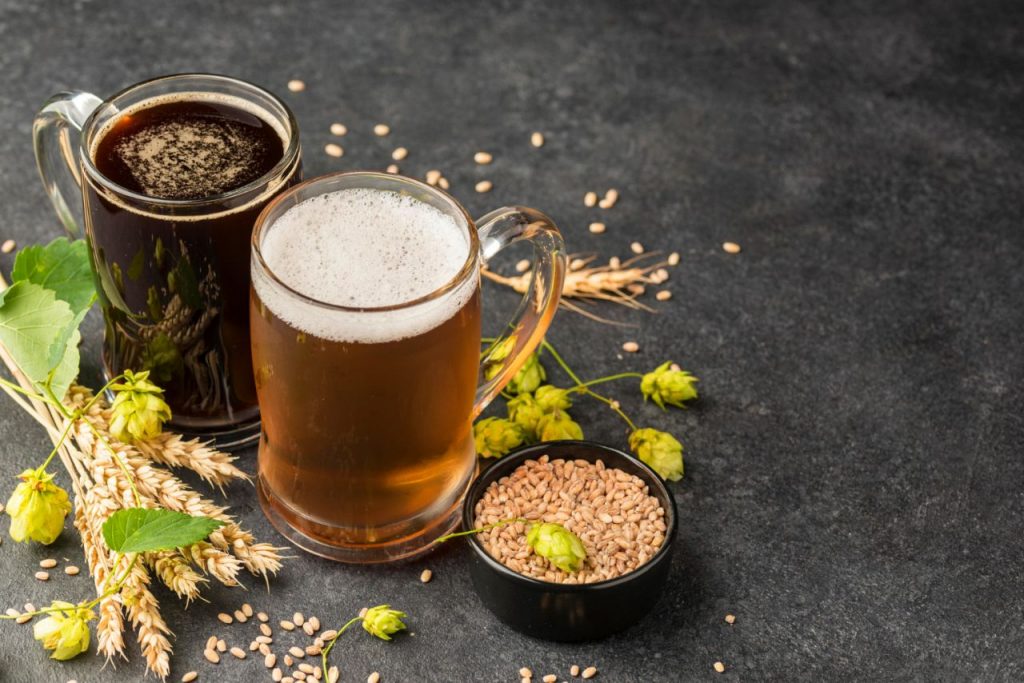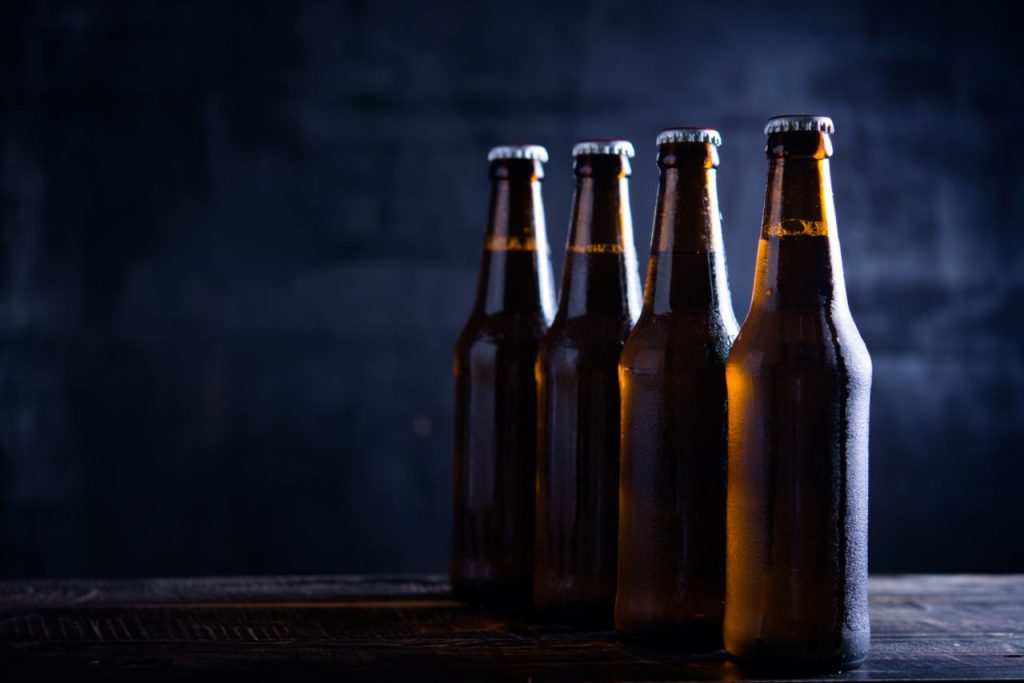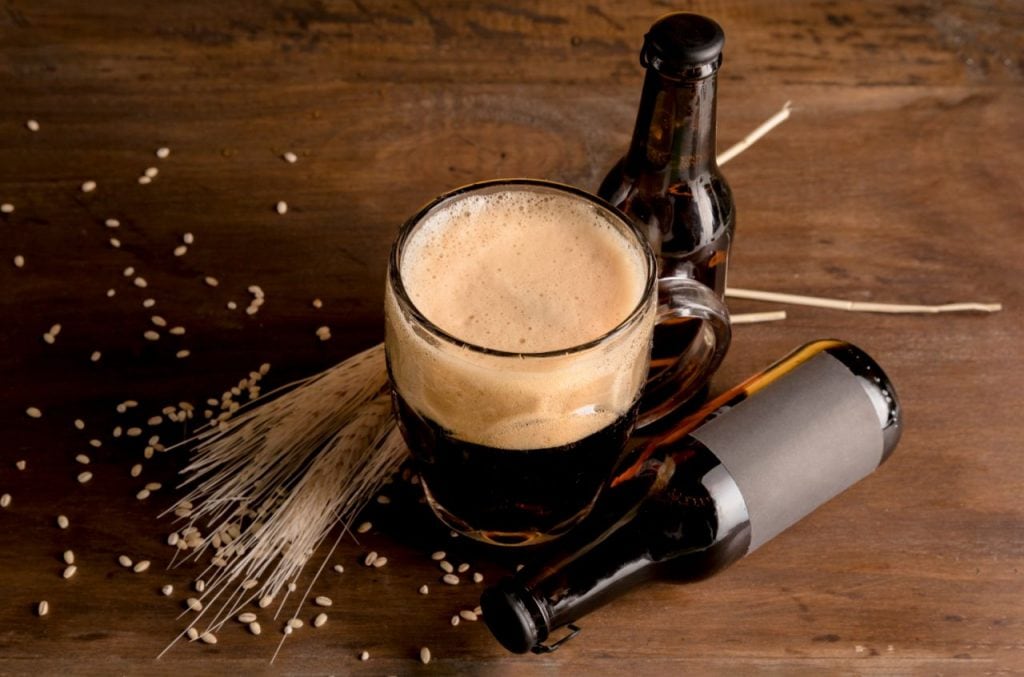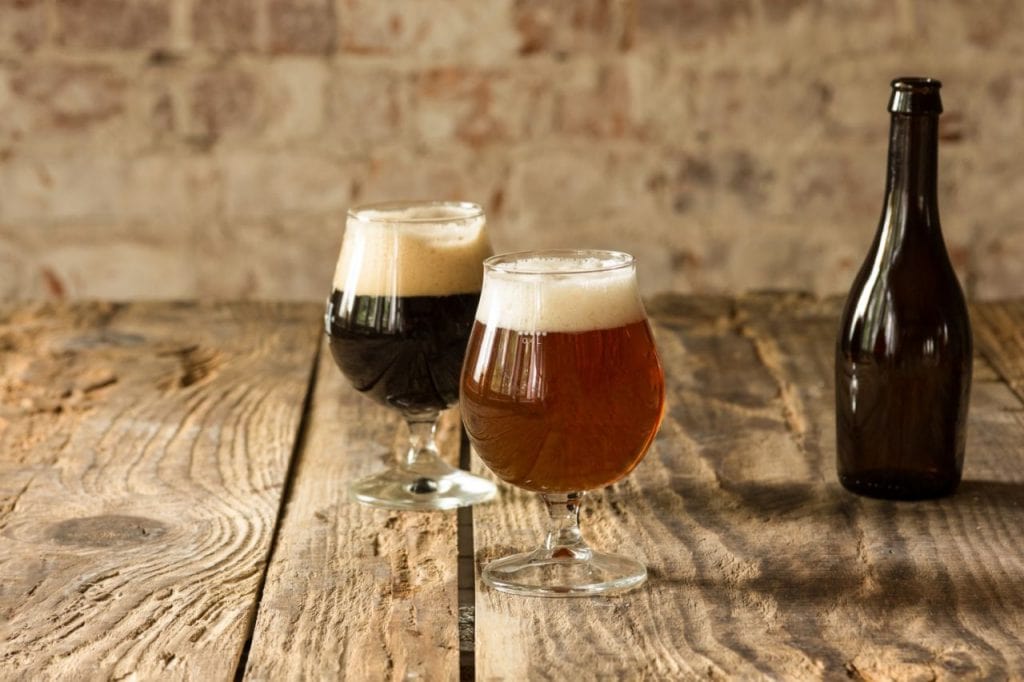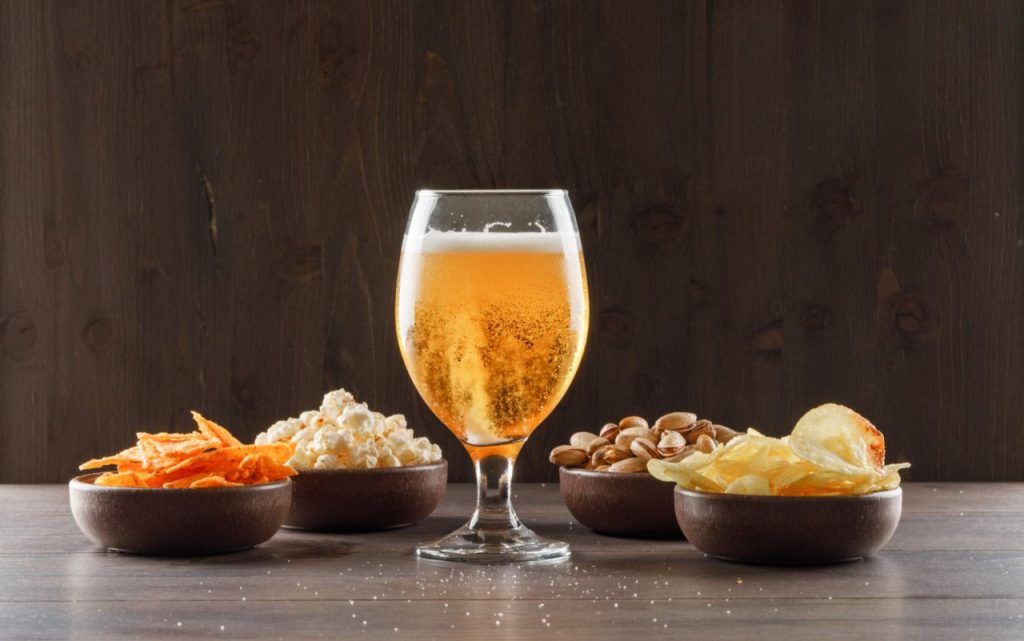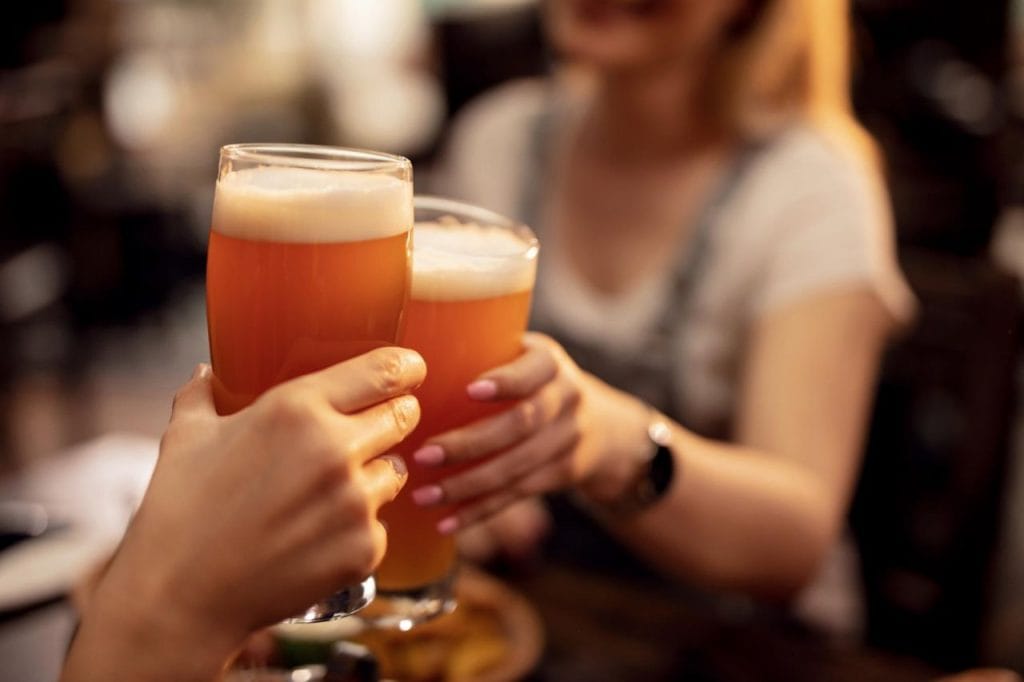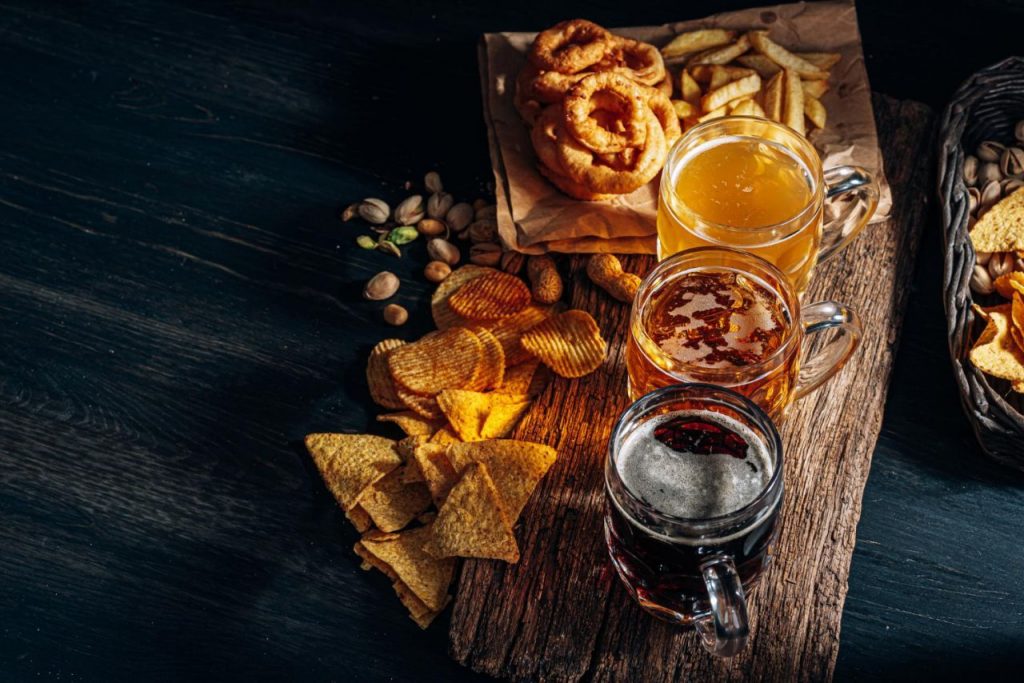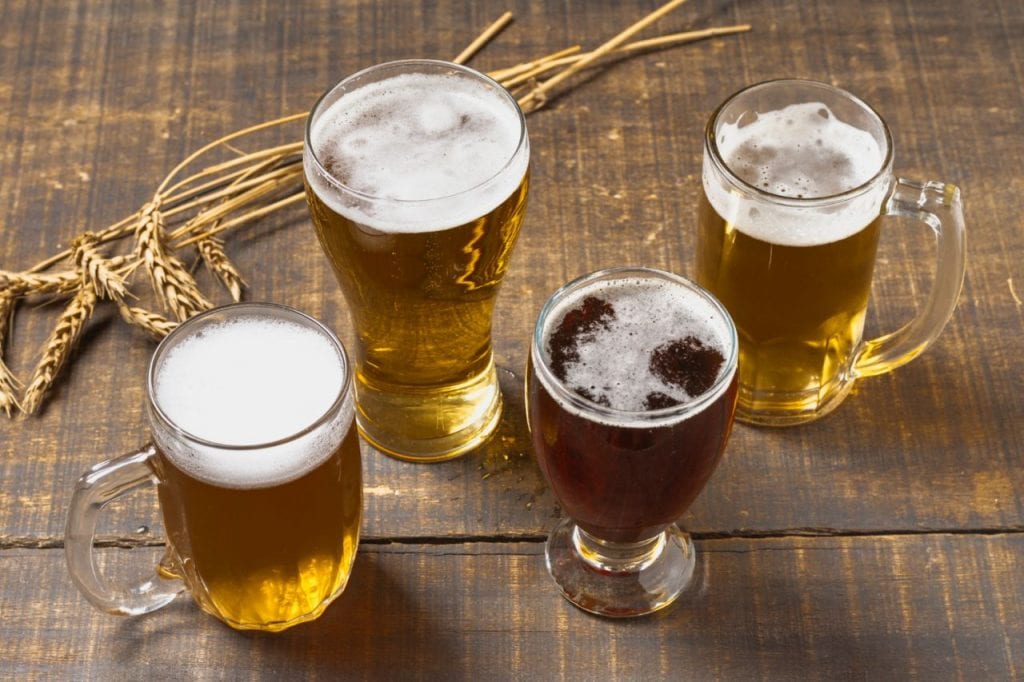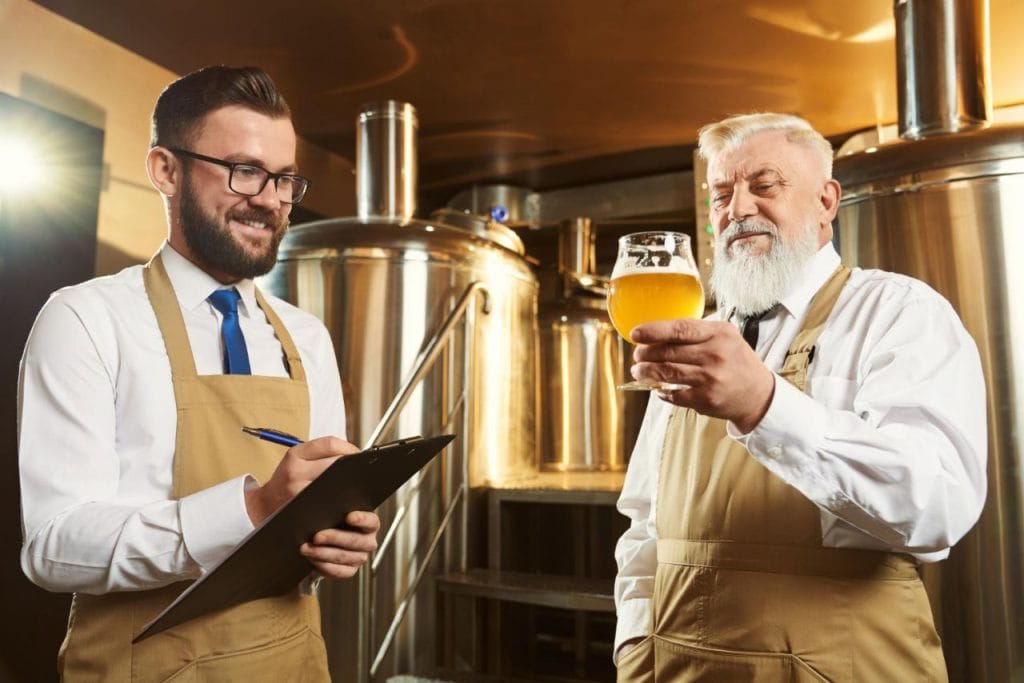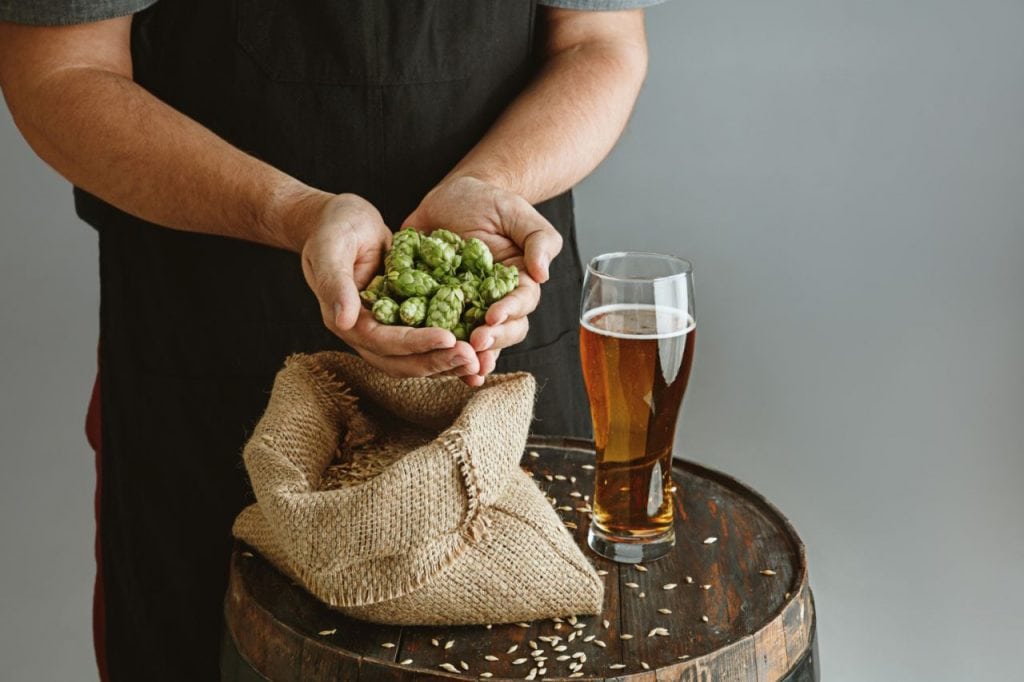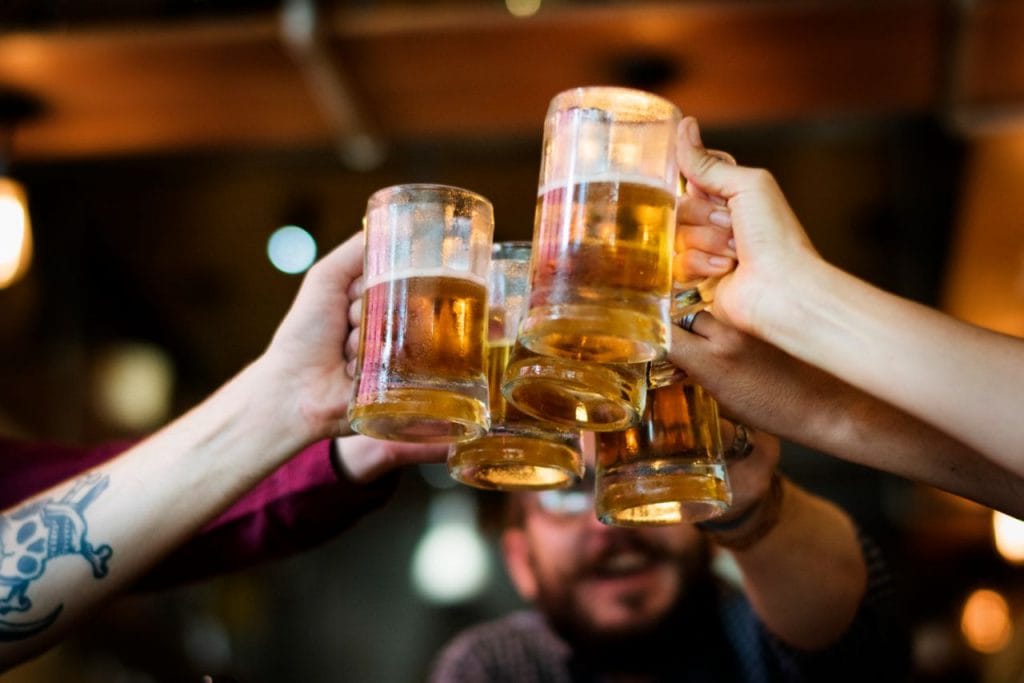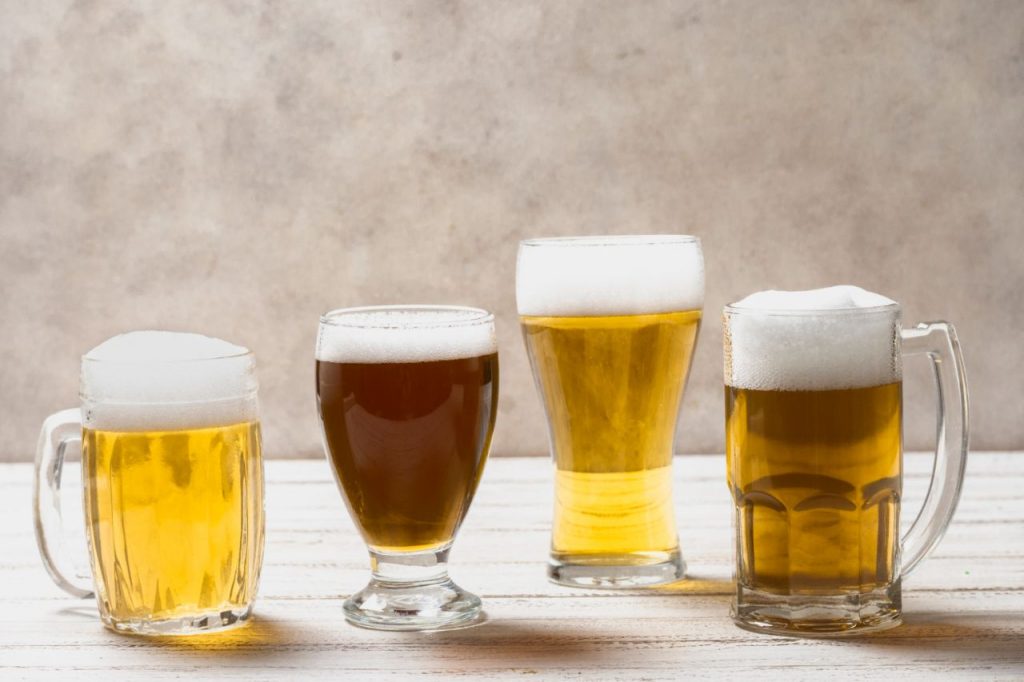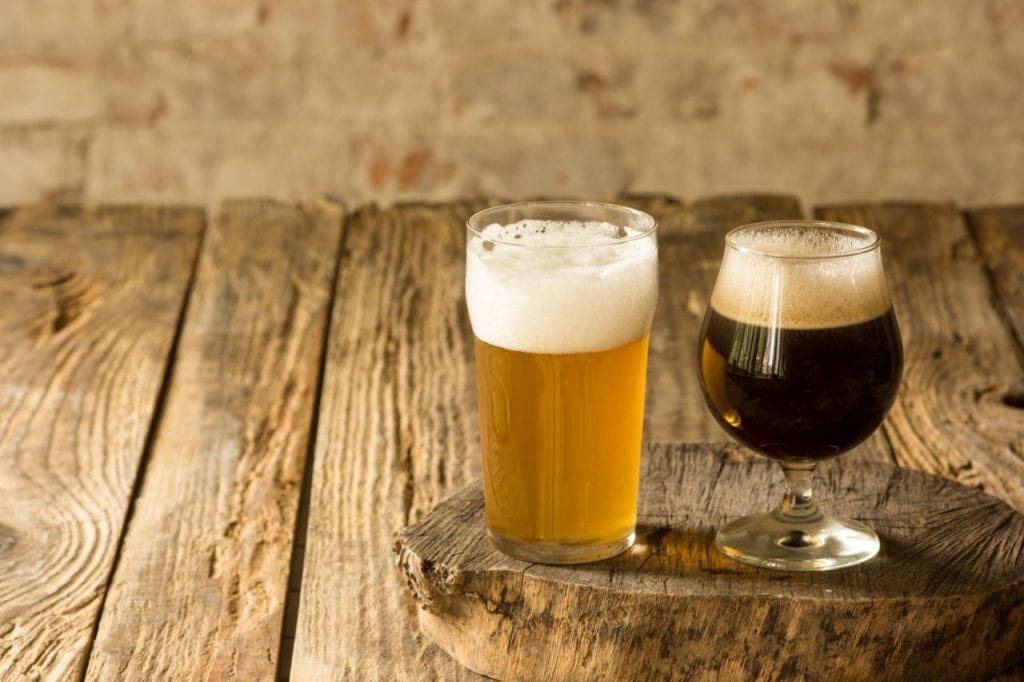This blog will explore the ins and outs of carbonating your beer like a pro. Whether you're a seasoned brewer or just starting, we've got tips and tricks to help you achieve that crisp, refreshing taste that makes beer so irresistible. So grab a cold one, sit back, and dive into the wonderful world of carbonation. And if you want to learn how to carbonate your beer like a pro, keep reading and find out!
A Definition of Carbonation.
Volumes of carbon dioxide (or "CO2" for short) are used to describe carbonation. This term's precise definition is up for debate, but it's safe to conclude that the more gas volumes present, the more carbonated a liquid will be. A bottle of champagne can reach up to roughly 7.0 volumes, whereas an English cask beer might be around 1.5. The global average density of CO2 is roughly 2.0 g/L, but this varies greatly depending on the region.
The solubility of carbon dioxide in a solution, said, decreases as the temperature of a solution increases. This indicates that the more CO2 a liquid can hold, the colder the liquid must be. The more CO2 remains in the solution as a function of temperature, the colder the final beverage will be; hence this is an important factor to consider when determining CO2 quantities. This is a primary reason why many beers have too much carbonation. Beers can be over-carbonated for a variety of reasons, which you can learn more about here.
Whether you’re after something easy drinking for a casual night or something special for your next big occasion - Tar Barrel has got you covered.
Ways of Bottling in Brewery
Typically, breweries begin with the bottling process. It's lovely to take just a few bottles to a party or give away a six-pack to a friend despite the hassle of washing, bottling, and capping. In addition, when bottling, you can add carbonation in several ways. All these components go into the beer after it has fermented but before it is bottled.
- Sugar, either corn or table, should be mixed in advance and added to the beer right before bottling. In most situations, we'll mix it into our beer in a separate bottling bucket after dissolving it with distilled water.
- If you wish to make a beer without added sugar, you can use dry malt extract (DME). Malt extract (DME) can be used for sugar, although more of it will be needed to achieve the same amount of carbonation.
- Krausening is the process of carbonating beer using freshly brewed wort. While the result is identical to the DME approach, determining how much wort to utilise requires a few extra steps. Here, we present an abbreviated form of the krausening equation.
- Carbonation Tablets - Carbonation tablets, often known as sugar or dextrose tablets, are available at various brewing supply stores and can be added to the bottle at the time of bottling. Normally, they fit bottles of 12 fluid ounces. They are convenient to use, but they only function well if you have a variety of bottle sizes, and they don't allow for a high degree of customisation in carbonation.
Methods for Keg Carbonation
The beer flavour is the primary focus of brewers. Tools, resources, and points are abundant when it comes to perfecting the art of beer brewing, but ultimately, a brewer's success or failure is determined by the quality of his product. The carbonation process is the last step within the brewing process that might affect the final flavour.
The trigeminal nerve in the mouth is stimulated by carbonation. This nerve detects heat, cold, and irritants like capsaicin in hot peppers. Beers with a lot of carbonation are said to "burn on the CO2." Every part of your mouth will be burning from this acidic sensation.
Beer's flavour is affected by carbonation because it carries volatile scent components out of the drink, where the nose can more easily detect them. Carbon dioxide not only carries flavour ingredients but also greatly contributes to the foamy head and velvety mouthfeel of a well-made beer. In short, carbonation is just as critical to a beer's overall quality as the initial gravity, bitterness, and colour.
Measuring and Mechanics
Beer carbonation is measured in "volumes" or grammes of carbon dioxide every litre. Metric countries use the latter term more. Australian beers average 2.5 volumes of carbon dioxide and 5 grammes per litre. One litre of beer's carbon dioxide would expand to 2.5 litres at 0° C and one atmospheric pressure.
Beer CO2 volumes grow when maximum pressure increases at a certain temperature. CO2 volumes rise as temperature drops at a fixed maximum pressure.
For instance, a beer equilibrated by carbon dioxide at 38 °F (3 °C) and 12 psi will have less CO2 than one at 15 psi. Conversely, beer cooled below 34 °F (1 °C) would increase CO2 content.
Carbonation requires knowing "equilibrated." A keg with uncarbonated beer around 38 °F (3 °C) is connected to a CO2 supply and set at 12 psi. Beer has 2.57 volumes of Carbon dioxide per standard gas chart. Beer in the keg starts flat and absorbs carbon dioxide first from headspace to reach 2.57 volumes. wash
Beer carbonation levels are shown on a gas chart. The dynamic situation in the example above differs greatly from the equilibrium beer.
A ratio of the gas surface over beer volume, a carbon-dioxide concentration difference between the gas and beer phases, and time determine the carbonation rate.
Gas surface area per beer volume increases the carbonation rate. The carbonation rate increases as the gas-beer carbon dioxide concentration difference increases. Head pressure raises gas phase CO2 concentration.
Time determines the rate. Time will equilibrate a system. For example, beer carbonation equilibrates with headspace pressure. Homebrewers have time because the batch size is small.
Head Pressure and Time
To achieve a consistently carbonated beer, maintain a constant pressure and temperature. For example, a Pilsner you just kegged needs to be carbonated to 2.6 volumes. At 40 degrees Fahrenheit (4 degrees Celsius), the gas pressure chart reads 13.5 psi. Easy method! Prepare your keg by placing it in the refrigerator, hooking up the carbon dioxide supply, and adjusting the regulator to 13.5 psi. It takes about five to seven days for a 19-litre (gallon) beer keg to reach equilibrium. This method of carbonating beer takes longer, but it prevents the beer from being over-carbonated.
Head Pressure and Shake
A week is too long to wait for brewers to try their latest creations. Get to equilibrium more quickly by setting up the apparatus and shaking the keg. Utilising a short length (three to four feet; 91 to 122 centimetres) of gas tubing to connect the CO2 bottle to the keg makes this technique much easier to implement. Beer and gas are better dispersed when more surface area is exposed, achieved by shaking the keg. The keg should be shaken, allowed to rest, and then shaken again. When the beer reaches headspace pressure, the carbon dioxide sound from the regulator will cease.
Gas-Injection
Carbonation can be sped up by injecting carbon dioxide gas below the keg's base. As bubbles expand, they expose more beer to the gas and improve its flavour. Some brewers use a gas pump connected to the keg's dip tube to release gas trapped in the headspace gradually.
The bleeding maintains the pressure from the beer gas. You want to slowly release air from the keg's headspace until the pressure inside is right. Cornelius kegs typically feature a pressure release valve at the top. Kegs with a screw-on pressure release should be bled manually. Carbonation stones aid this procedure. To make small bubbles, the stone uses gas. Rising slowly and with a large surface area to volume ratio are two advantages of small bubbles.
This is the quickest method for mass carbonating a tank or keg. The quickest technique is called "in-line carbonation," It involves injecting CO2 into beer as it flows through a pipe. Large-scale commercial breweries often use it. However, beer can be over-carbonated if you use a stone to accomplish the job, so be careful not to push it over its equilibrium pressure. The carbonation stones cost $25.
As important as measuring the grains and hops, beer regulation is getting the carbonation right. Carbon dioxide is essential in beer to create aroma, mouthfeel, and foam. It's not easy to do science, but there are tried and true approaches to get the job done. Get the bubbles under control, and you'll have a superb beer.
How to Choose Which Sugar to Use
Technically, any fermentable sugar can be used for carbonation, but volumetric measurements are notoriously inaccurate, so always use weight.
Corn Sugar
Corn sugar dominates the market because it is both affordable and flavourless. Four ounces (again, on weight) of maise sugar should produce 2.5 volumes of CO2 for your beer, which is about par for the course for a Pale Ale.
Cane Sugar / Table Sugar
If you don't have any corn sugar on bottling day, you can substitute table (cane) sugar instead; measure it by weight rather than volume, as different manufacturers use different sugar grind sizes. Due to this, carbonation levels may become too high or too low. It adds very little flavour at the concentrations typically used for priming. However, cane sugar carbonates slightly more than corn sugar, so if you're already on the edge of your packaging's capabilities, you should go lightly here.
Malt Extract
Several brewers also use malt extract since it is readily available to them, and they prefer not to use adjuncts at any point in the brewing process. However, malt extract needs more than just cane or corn sugar to work properly. In addition, be wary of the boiling process's sudden temperature increase. The sugars are unaffected by the potential for boilovers.
Honey
Because it is so annoying to dilute honey and then take a gravity reading, it is best to avoid using honey while bottling. The best options are corn sugar, cane sugar, or malt extract. They are typically a lot more dependable.
Brown Sugar, Molasses & Sorghum
Certain beers, especially darker ones, may benefit from the additional aftertaste introduced during bottling by adding darker sugars like brown sugar, sorghum, or various types of molasses. Remember that while you consider the many sugar options.
You must also be aware that the amount of fermentable sugars offered by weight varies significantly amongst sugars. If we utilise cane sugar as our basis, then we need 1.1 times that much corn sugar and 1.3 times that much brown sugar to get the same carbonation. You should use around 1.5 times as much when working with malt extract. Before moving forward, you'll need a strong grasp of the specific gravity of other sugars like honey, molasses, and sorghum.
Conclusion
The solubility of carbon dioxide decreases with increasing temperature, which must be taken into account when measuring CO2 amounts because it is used to characterise carbonation. Beer is carbonated through a process called krausening with newly brewed wort and carbonation tablets, which can be found at most home brewing supply shops and added to the bottle right before serving.
Beer carbonation rate is determined by the ratio of gas surface to beer volume, the difference in carbon-dioxide concentration between the gas and beer phases, and the passage of time, and is expressed in volumes of carbon dioxide per litre.
Carbonation can be accelerated by employing carbonation stones to create tiny bubbles, shaking the keg, and injecting carbon dioxide gas just below the keg's base. Beer is best bottled with corn sugar, cane sugar, or malt extract; however, the specific gravity of honey, molasses, and sorghum must be considered.
Content Summary
- Whether you're a seasoned brewer or just starting, we've got tips and tricks to help you achieve that crisp, refreshing taste that makes beer so irresistible.
- Volumes of carbon dioxide (or "CO2" for short) are used to describe carbonation.
- The solubility of carbon dioxide in a solution, said, decreases as the temperature of a solution increases.
- This is a primary reason why many beers have too much carbonation.
- Beers can be over-carbonated for a variety of reasons, which you can learn more about here.
- Typically, breweries begin with the bottling process.
- If you wish to make a beer without added sugar, you can use dry malt extract (DME).
- Krausening is the process of carbonating beer using freshly brewed wort.
- Carbonation tablets, often known as sugar or dextrose tablets, are available at various brewing supply stores and can be added to the bottle at the time of bottling.
- The beer flavour is the primary focus of brewers.
- The carbonation process is the last step within the brewing process that might affect the final flavour.
- The trigeminal nerve in the mouth is stimulated by carbonation.
- Beers with a lot of carbonation are said to "burn on the CO2."
- Beer carbonation is measured in "volumes" or grammes of carbon dioxide every litre.
- Australian beers average 2.5 volumes of carbon dioxide and 5 grammes per litre.
- Beer CO2 volumes grow when maximum pressure increases at a certain temperature.
- Beer has 2.57 volumes of Carbon dioxide per standard gas chart.
- Beer carbonation levels are shown on a gas chart.
- A ratio of the gas surface over beer volume, a carbon-dioxide concentration difference between the gas and beer phases, and time determine the carbonation rate.
- Gas surface area per beer volume increases the carbonation rate.
- The carbonation rate increases as the gas-beer carbon dioxide concentration difference increases.
- For example, beer carbonation equilibrates with headspace pressure.
- To achieve a consistently carbonated beer, maintain a constant pressure and temperature.
- A week is too long to wait for brewers to try their latest creations.
- Get to equilibrium more quickly by setting up the apparatus and shaking the keg.
- Utilising a short length (three to four feet; 91 to 122 centimetres) of gas tubing to connect the CO2 bottle to the keg makes this technique much easier to implement.
- When the beer reaches headspace pressure, the carbon dioxide sound from the regulator will cease.
- Carbonation can be sped up by injecting carbon dioxide gas below the keg's base.
- Some brewers use a gas pump connected to the keg's dip tube to release gas trapped in the headspace gradually.
- The bleeding maintains the pressure from the beer gas.
- You want to slowly release air from the keg's headspace until the pressure inside is right.
- Carbonation stones aid this procedure.
- To make small bubbles, the stone uses gas.
- Rising slowly and with a large surface area to volume ratio are two advantages of small bubbles.
- This is the quickest method for mass carbonating a tank or keg.
- Four ounces (again, on weight) of maise sugar should produce 2.5 volumes of CO2 for your beer, which is about par for the course for a Pale Ale.
- However, malt extract needs more than just cane or corn sugar to work properly.
- In addition, be wary of the boiling process's sudden temperature increase.
- The sugars are unaffected by the potential for boilovers.
- The best options are corn sugar, cane sugar, or malt extract.
- Remember that while you consider the many sugar options.
- Before moving forward, you'll need a strong grasp of the specific gravity of other sugars like honey, molasses, and sorghum.
FAQs About Beer
While it is possible to carbonate beer in a can, it is not a recommended method. Carbonating beer in a can require specialised equipment and can be dangerous if not done properly. It is much easier and safer to carbonate beer in a bottle or keg.
Priming sugar is a simple sugar such as corn sugar, dextrose, or sucrose that is added to beer before bottling. The yeast in the beer consumes the sugar, creating CO2 as a byproduct, which carbonates the beer.
The amount of priming sugar you should add to your beer depends on the style of the beer and the amount of carbonation you want. As a general rule, you should add about 3/4 cup of priming sugar per 5 gallons of beer.
It typically takes about 1-2 weeks for the beer to natural carbonate in the bottle. The beer should be stored at room temperature during this time.
Keg conditioning is a method of carbonating beer in a keg. It involves priming sugar or CO2 to the beer in the keg and allowing it to carbonate over time. The beer can then be served directly from the keg using a draft system.

